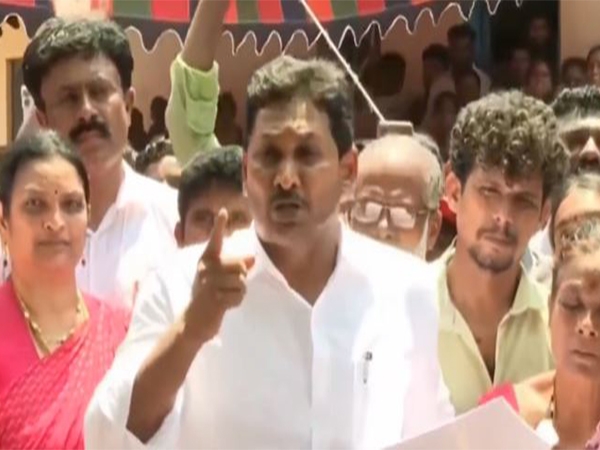Char Dham: SC allows double-lane highways in view of security concern
Dec 14, 2021

New Delhi [India], December 14 : The Supreme Court on Tuesday allowed the Ministry of Defence (MoD) to double-lane widening of roads that are part of the 899-km Char Dham project in Uttarakhand in view of security concerns at the Indo-China border.
A Bench headed by Justice DY Chandrachud said, "We allow the application by Defence Ministry for double lane highways for three strategic highways."
"Recent past has thrown up serious challenges to security along the borders," it said.
The apex court modified its September 8, 2020 order which had restricted the width of Char Dham projects - Rishikesh to Mana, Rishikesh to Gangotri, and Rishikesh to Pithoragarh, and allowed the three strategic roads to be double lane paved shoulder as said to be important by the armed forces.
The top court had in September 2020 had ordered that the road width on the entire Char Dham route cannot be more than 5.5 meters in view of the Ministry of Road Transport and Highways (MoRTH) own circular in 2018.
Seeking modification of the September order, the MoD had said that Justice Rohinton F Nariman's Bench had allowed 5.5 meters, but the MoRTH amended it, as the roads are being used for different purposes, going right up to the Chinese borders.
The Central government had told the top court to accept the majority view of the High Powered Committee (HPC), which has favored a 10-meter road width for the Rs.12,000-crore Char Dham highway project.
Today, passing the order on the Ministry of Defence's plea for the widening of roads, the Bench said, "We find there are no malafides in an application filed by Ministry of Defence. MoD is authorized to design operational requirements of armed forces. Bonafides of MoD are apparent from security concerns raised in a security committee meeting."
It added, "This court in the exercise of judicial review cannot second guess the requirements of the army."
The apex court also set up an oversight committee headed by retired Supreme Court judge Justice AK Sikri to oversee the project with respect to the three highways and report to the Court directly on the same.
It said the Committee to ensure all remedial measures are taken in the interest of the environment and recommendations of the High Power Committee are implemented while going ahead with the project.
The top court also took into note the conclusion by the HPC that best practices were not adopted by the government in some places during the construction and which has also suggested remedies for future action to reduce the impact.
The Bench noted that the environmental impact of these roads cannot be any less important here. It added that the HPC will continue to oversee the work apart from the three highways.
The case is related to the 899-km Char Dham highway project, which the government has said will improve access to four Hindu pilgrim sites in Uttarakhand.
NGO Citizens for Green Doon had earlier approached the top court and raised environmental concerns regarding the Char Dham highway project. Citizens for Green Doon had approached the top court of the devastation caused to mountains as a result of violations of directions by authorities.
Last year Justice Nariman Bench had ordered that the road width on the entire Char Dham route cannot be more than 5.5 meters in view of MoRTH's own circular in 2018.
The Chairman of the High Power Committee had in a minority report flagged widening of roads under the Char Dham project, which touches sensitive borders with China.
Ministry of Defence had said given the present situation, quick movement of men and machinery would be of paramount importance and require wide roads.
The top court by its September 2020 order had directed the Centre to comply with the 2018 circular of MoRTH on the aspect of the width of the road while constructing Char Dham national highway and also asked the Centre to do plantation activity to compensate for the loss of forest area due to construction.
Char Dham Project is a project to widen nearly 900 kilometers of hill roads to improve access to pilgrimage spots in Uttarakhand.
As per MoRTH 2018 circular, the intermediate carriageway of a 5.5 metres tarred surface is adopted for hilly terrain. The Centre had earlier sought top court permission to make it 7 meters but the court had refused to say that the government can't violate its own circular.
Later, one report with the signatures of four members of the 26-member committee, including chairperson Ravi Chopra, an environmentalist and former director of the Dehradun-based People's Science Institute, recommends that the Supreme Court take the final call on road width while suggesting an intermediate width of 5.5 metres. It cited a circular issued by the Union road transport ministry in 2018.
The other report has the signatures of 21 members and suggests the government stick to the project's present design and roads all along the highway be expanded to double lanes as planned.
The government's own MoRTH, had in March 2018, recommended against 'double laning and paved shoulders' in hilly terrain and recommended a narrower intermediate road width.
Meanwhile, by a fresh circular on December 15, 2020, MoRTH also amended its previous circular and increased the road width in hilly and mountainous terrains along the Indo-China border to 10 metres.
The Supreme Court had set up the High Powered Committee in August 2019 and mandated it to consider the ecological impact of the 900-km project, which the government has said will improve access to four Hindu pilgrim sites in Uttarakhand.
















